Founded in 1961 as a 9 hole course, Wexford Golf Club has matured into a wonderful 18 hole parkland course situated in the heart of Wexford town. The course, which was lengthened and upgraded in 2006, is a par 71 course, measuring 6,545 yards from the championship tees and provides a challenge for players of all standards.
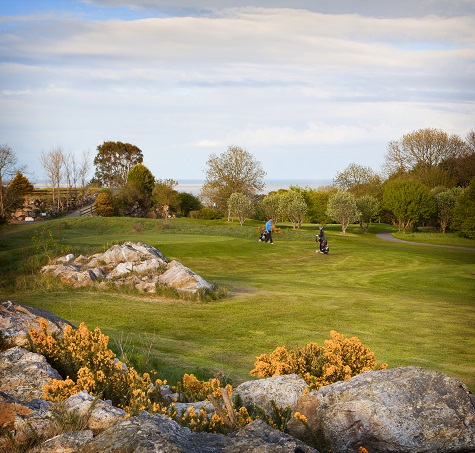
The 4th tee surrounded by quartz rock formations
The location of the club, on top of Mulgannon Hill, affords the visitor spectacular views in all directions. To the north are the Blackstairs Mountains and Wexford Town, while the new holes on the southern slopes overlook Wexford Harbour and most of south County Wexford. The site is close to what locals describe as ‘The Rocks’, an outcrop of quartz, which indicates the type of terrain the golf course lies on.
2020 has been an extraordinary year, to say the least, for the club. With the various Covid-19 restrictions in place, the course was forced to close for a total of 11 weeks. At the time of writing the course has remained closed since the 24th of December. It will be at least the 5th of March before it will be open for play again. Yet, despite being closed, membership has remained steady. However, green fee income has fallen but when play will resume again it is hoped that there will be a big demand for green fees as people relish being able to play outdoor sports and meeting up with one another again.
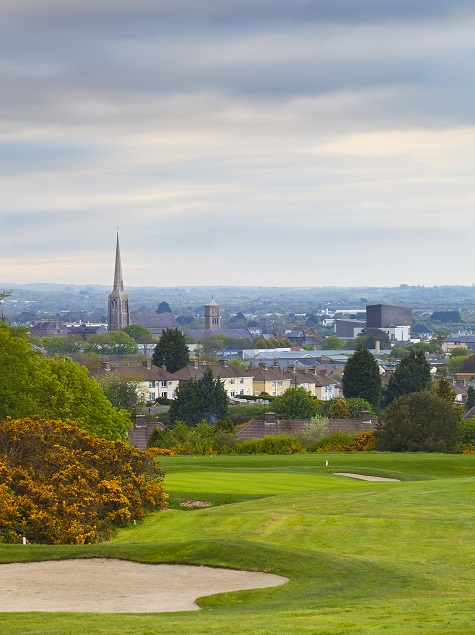
The view of Wexford town from the 15th hole
Meet the course superintendent
County Wexford native, John Doyle, has been the course superintendent since 2005. Before he came to the Wexford town club John was the assistant greenkeeper in Delgany Golf Club in County Wicklow. His brother, Des, is the course superintendent at Tramore Golf Club in County Waterford.
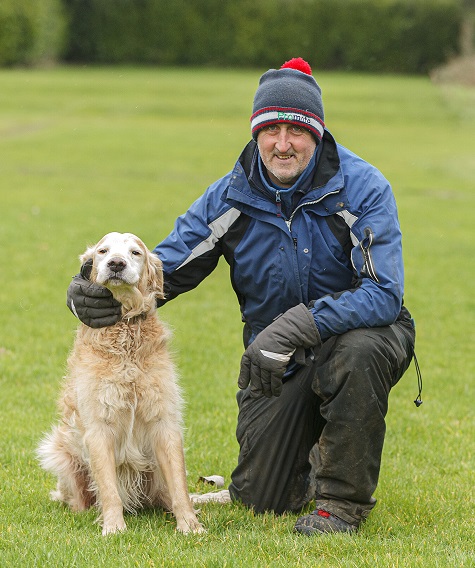
John Doyle with his Golden Retriever ‘Neville’
John started his greenkeeping career at New Ross Golf Club (another golf club in County Wexford) where he learned the basic skills from head greenkeeper Seamus Power.
John is highly regarded by the club committee and its members. So much so that the club gave him Honorary Membership several years ago, a nice gesture in showing their appreciation for the work John and his staff are doing. This would be a fitting way for other clubs to show their appreciation to their course superintendent.
John is one of three full time staff at the Wexford club. Two extra seasonal staff are taken on from April to November.
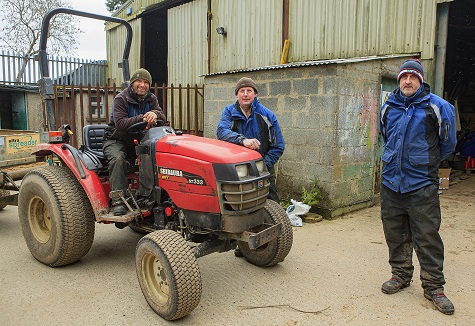
The greenkeeping staff from left: John Kehoe, Joe Cashin and John Doyle
Covid-19
The coronavirus pandemic has affected evryone across the world. It hasn’t escaped Wexford Golf Club either. The lockdown has forced the club to close its gates for members and visitors. Thankfully, turf maintenance on sports pitches and golf clubs is deemed to be essential work. This means that greenkeeping staff can come to work as normal during the lockdown. However, there are some limitations.
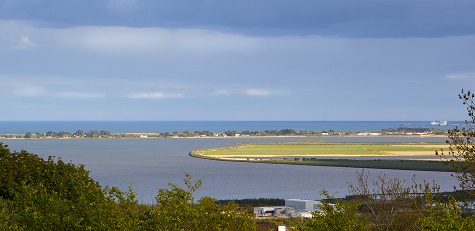
The view from the 13th tee
“In order to reduce contact with each other, we have done away with our morning tea break and shortened our work day by 15 minutes to compensate for it,” said John. “At lunch break we eat seperately. We have to wear our masks when working together, such as doing our bunker lining and remodelling. Having said all that we are extremely fortunate in that the work we do is outdoors so the risk of contacting the disease is significantly reduced.”
Course development
An opportunity arose for Wexford Golf Club to purchase more land, of which they took advantage, and in 2004 work began on constructing five new holes on the newly acquired lands. This was Phase 1 of a three phase expansion project on the course, which also included the construction of 3 new greens on the old course.
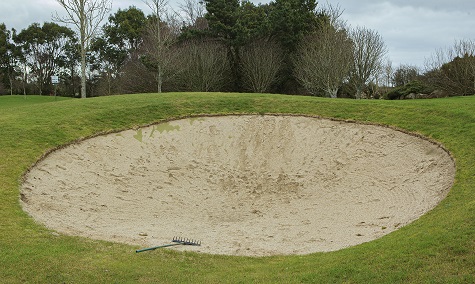
A recently remodelled and lined bunker using astro turf
John arrived to the club just in time to oversee the grow-in of the new holes. Turf from 5 of the greens on the old course was used to sod the newly constructed greens, which meant that 5 temporary greens had to be opened to allow a relatively smooth transition to the new holes. The greenkeeping staff undertook the task of re-sodding these greens themselves.
Phase 2 of the project began in 2006 when 6 holes on the existing course were redesigned. The course now plays longer than the old 18 hole course and, despite this, the par of the course was reduced from 72 to 71. There are now 5 par 3 holes and 4 par 5 holes on the course.
The final phase of the project was the building of the new clubhouse and 2 new greens (1st & 18th). The old 18th green was removed to allow room to expand the car park. The timing of this part of the project was unfortunate as, at the time, Ireland was at the height of the property boom when building costs were at their highest. Two years later saw the collapse of the economy with building costs tumbling, but Wexford Golf Club were already committed to large building cost repayments. Despite this, Wexford can boast of a first class clubhouse, which commands wonderful views of the course, Wexford town and the surrounding countryside.
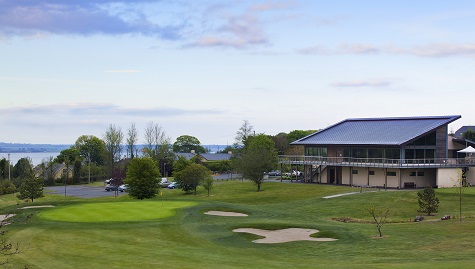
The 18th green and clubhouse
Course maintenance
John’s feeding programme for the greens can vary from season to season. His fertiliser inputs will depend on soil sample results which he gets tested every Spring and Autumn. During December 2020, John was able to hollow core and topdress the greens (using 13mm tines). He applied a 3:0:12 N:P:K feed with phosphites and seaweed (to help build up disease resistance). During hollow coring the greens are overseeded with Crystal Blue Links creeping bentgrass. “This is a new cultivar of creeping bentgrass which is good for low light and shady conditions which should suit conditions here as we have a lot of trees around the course,” says John. The greens are hollow cored in autumn as well.
During the growing season John would usually apply 6 units of Nitrogen as a liquid feed with trace elements added every 14 days.
The fairways are topdressed in May/June and again in September/October. 1500 tonnes of sand is applied during the year.
The greens, approaches and tees have automatic irrigation installed, fed by a newly built 60,000 gallon concrete, above ground, irrigation tank. Water from a nearby well feeds the tank.
In order to obtain his Degree in Turf Management, John did his thesis on the effects of greens rolling using turf irons. His research and trials showed that by regular rolling, the height of the grass could be increased without loss of green speed and that mowing frequency could also be reduced. This had the knock-on effect of fewer disease outbreaks due to the reduced damage to the leaf blade from mowing. John puts this research into practice by carrying out regular rolling using the turf iron.
Environmentally friendly
For several years the rough in the non playing areas of the course have been allowed to grow wild. John Kehoe and Joe Cashin are part of the greenkeeping staff at Wexford and both have a keen interest in wildlife. “We have seen an increase in the butterfly population since we let the grass grow and now the rare Essex Skipper, which arrived 8 years ago, is thriving here,” says John. There is a lot of wildlife activity around the course with sightings of buzzards, sparrow hawks, ravens, badgers, foxes and red squirrels. Woodpeckers have also arrived with a pair nesting on the course.
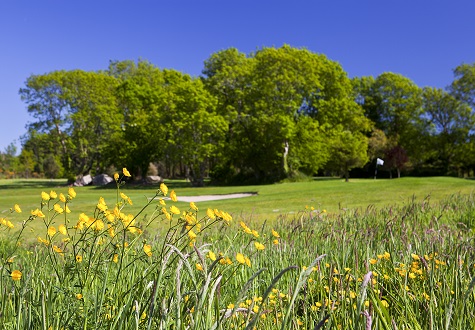
Wild flora thrive in the unmown rough areas. This provides habitat for butterflies such as the rare Essex Skipper
With early morning start times, being a greenkeeper offers the opportunity to see much wildlife in the working environment.
During the winter months, tree planting takes place around the course. Hundreds of native species such as oak, birch, beech, alder, and scotts pine are mixed planted together in groups or spinneys. “We do this to encourage wildlife and it’s also a way of reducing the club’s carbon footprint,” said John. It is truly amazing to see a diverse range of wildlife species thrive at the edge of a major town.
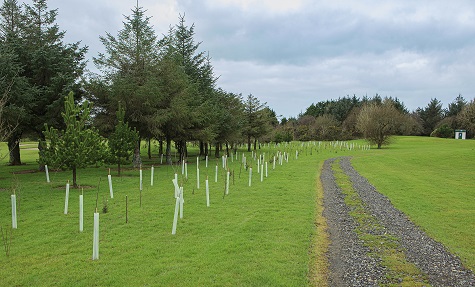
Some newly planted trees
Winter work
Bunker remodelling and lining takes up a lot of the work schedule during winter. John has developed a clever way of upcycling, using old astra turf to line the bunkers. “Over the years we have had problems with bunkers silting up, and water run off after heavy rain would cause clay to mix with the sand. It’s expensive to replace sand in bunkers so I came up with the idea of using old astra turf as a bunker lining,” said John. The astro turf would come from sports pitches around the country that would be replacing their playing surface. The astro turf was free as it would normally be discarded. The only cost involved was transporting it to Wexford. What makes the astro turf suitable for bunker lining is that it prevents soil and weeds coming through but it is also porous, which allows water to drain.
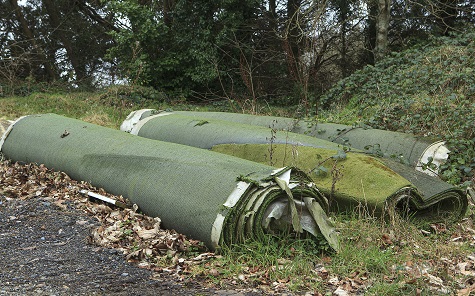
Disgarded astro turf which will be used for bunker lining
Many of the 68 bunkers on the course were designed as very large bunkers and it was getting very expensive to maintain them. The club decided to redesign the bunkers, making many of them smaller. During the remodelling John decided to improve the drainage of the bunkers by adding deep soak holes and filling them with drainage stone. The astro turf would be shaped, cut and fittd in place before the sand would be added.
As mentioned earlier, tree planting is carried out during the winter but some of the more mature trees need to be pruned as well, particularly the lower branches to allow for ease of mowing and for golfers to find lost balls more easily. Many of the smaller branches are shredded as mulch, the bigger limbs being used as firewood.
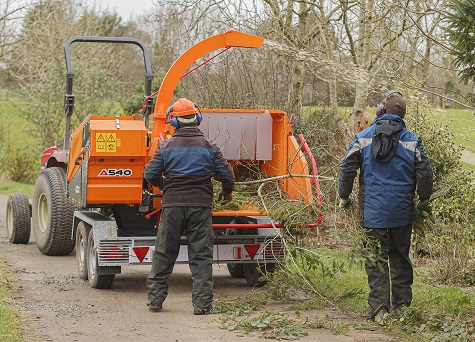
John Kehoe and Joe Cashin shredding branches
Drainage on the course is done in-house during dry periods of the winter. This is done mainly on the fairways and since starting this several years ago, the amount of days closed, due to waterlogging, has decreased significantly. This is helped by regular sanding of the fairways.
Wexford Golf Club has a unique fundraiser to help with course developments such as bunker remodelling. Members have the opportunity to take part in a weekly “Guess where the joker card is” competition in the clubhouse. They have to guess which of the displayed cards contains the joker. There is a small money prize for the winner and all proceeds go specifically towards the course development projects. Some of the members at Wexford volunteer to help out with some of the various projects from time to time.
Wexford Golf Club is a gem of a course. It is hard to imagine, with all the flora and fauna that exists there that you are so close to a busy town. When the club does eventually open for play again, there will be a lot to look forward to for the visiting golfer, all thanks to John and his busy greenkeeping staff.